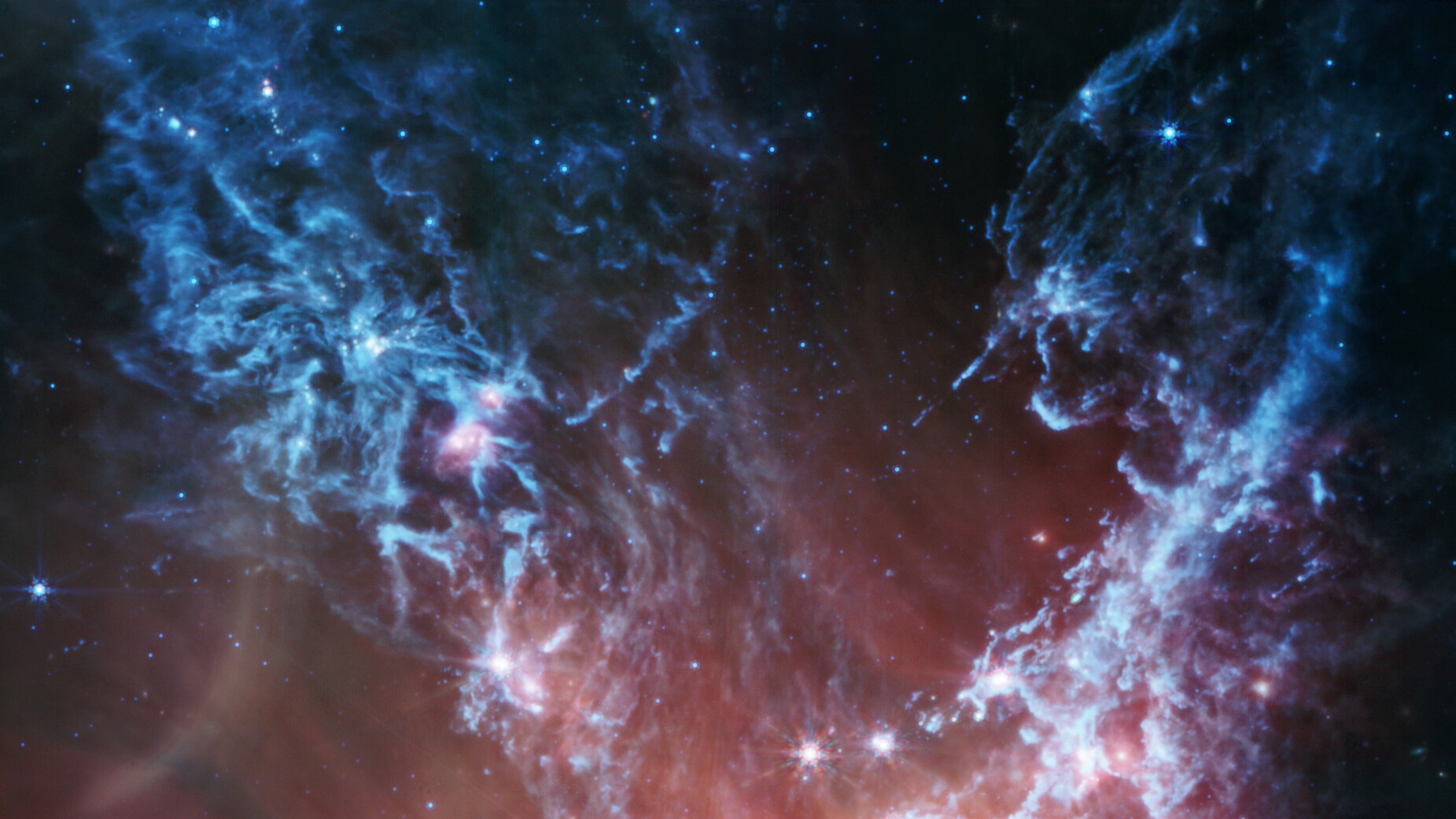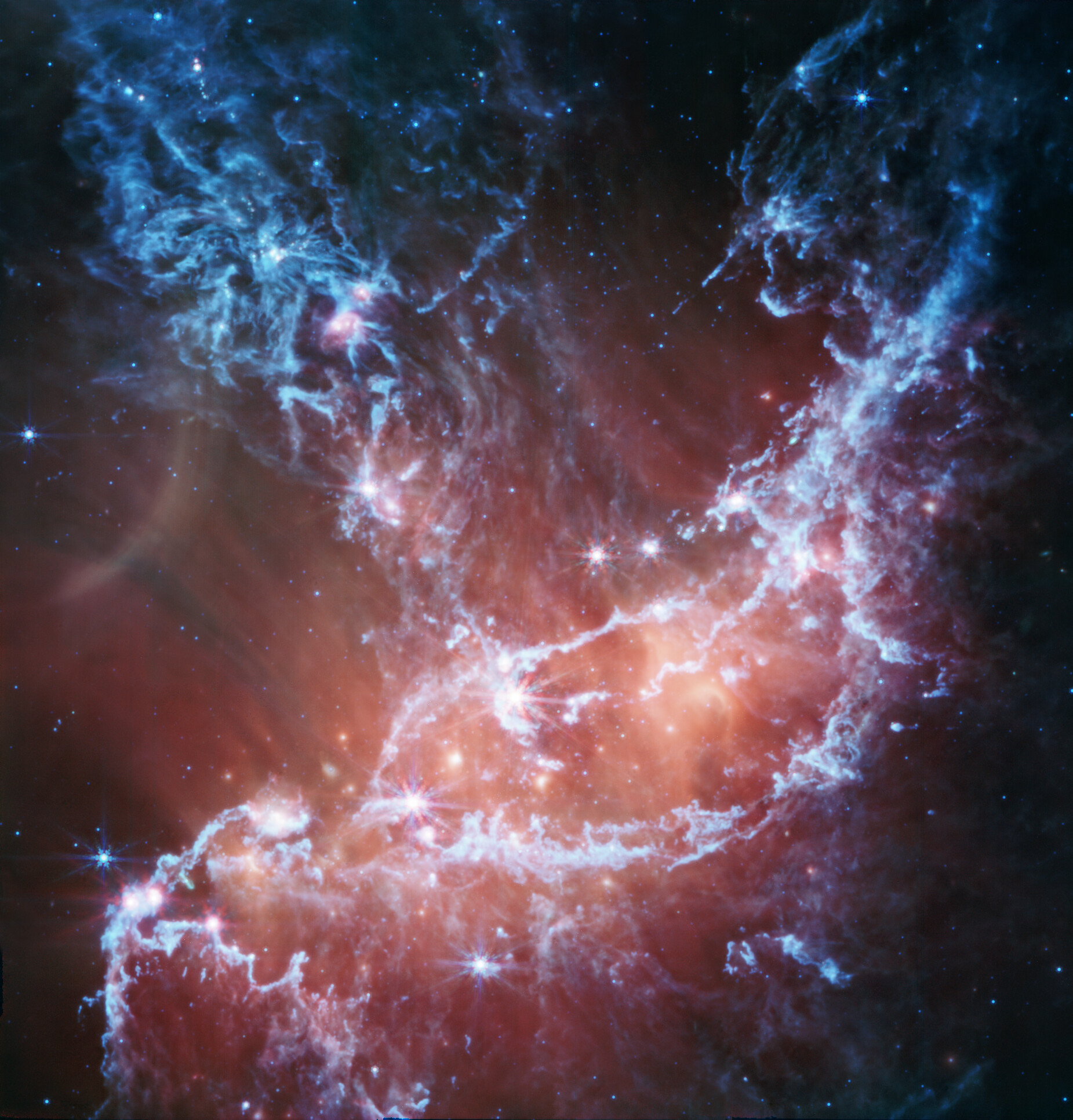James Webb Space Telescope spotlights gorgeous young stars in a galaxy next door (photo)
The JWST continues to give us cosmic eye candy, this time while shedding light on the cosmic noon.

A star-studded cosmic neighbor 210,000 light-years away is now available to view on our computer screens in unprecedented detail, thanks to NASA’s mighty James Webb Space Telescope (JWST) and the power of modern internet connection.
The newly released James Webb Space Telescope photo captures NGC 346, a star-forming region in a satellite galaxy of the Milky Way called the Small Magellanic Cloud (SMC). The blue wisps of light represent emissions from molecules like silicates and polycyclic aromatic hydrocarbons, while red fragments highlight dust warmed by the brightest and most massive stars in the region’s center.
Overall, astronomers have detected 1,001 light dots in the image — and most of them are still young stars blanketed in dust, according to a statement accompanying the image. This pocket of the universe is much younger than the Milky Way, our home galaxy, which is seen in the fewer amounts of heavy elements it features. The intriguing region is visible to the unaided eye in the southern constellation Tucana.
Related: James Webb Space Telescope's stunning mosaic of Orion Nebula uncovers rogue planets (photos)
Heavy metals are usually churned in stars across timespans of eons, then deposited back into their local surroundings via cosmic processes like nuclear fusion and supernova explosions. Astronomers know cosmic dust is formed from those heavy elements, so they expected to see little of it in the NGC 346 region. However, the latest photo shows “ample dust within this region,” Webb representatives wrote in the statement.
Astronomers say the image, which was captured using the Mid-Infrared Instrument (MIRI) onboard Webb, is allowing them to better understand how many stars and protostars are present in the region. Those observations could eventually shed more light on an era in the universe billions of years ago known as cosmic noon.
At that time, star births reached a peak rate across the universe and the level of heavy elements was lower than amounts measured today — a distribution in line with how NGC 346 is now evidenced to be.
Breaking space news, the latest updates on rocket launches, skywatching events and more!

Sharmila Kuthunur is an independent space journalist based in Bengaluru, India. Her work has also appeared in Scientific American, Science, Astronomy and Live Science, among other publications. She holds a master's degree in journalism from Northeastern University in Boston.

